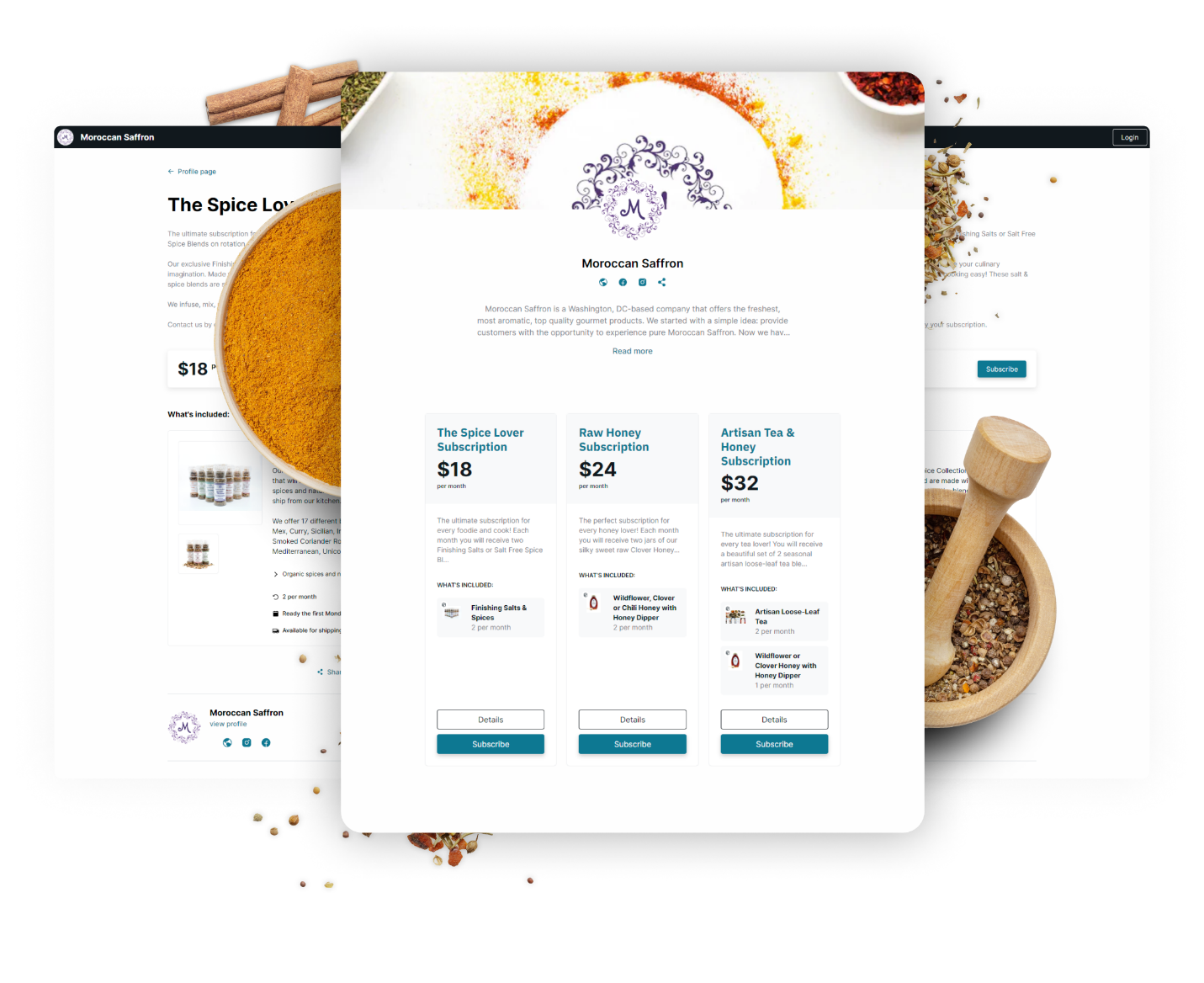An awesome business idea coupled with a great product isn’t enough to grow your business. Choosing the right pricing strategy is more important than anything else. Unfortunately, most business owners fail to set a pricing strategy that appeals to their entire customer base.
You can’t attract all the potential customers with one price. A single price for all the buyer personas and different target markets is a bad idea. Offering different prices to your target audience based on product features and functionalities helps you acquire new customers quite easily. This type of different price point is a win-win.
How?
Let’s find out in this guide on tiered pricing strategy.
Tiered Pricing Strategy Definition
Tiered pricing refers to a pricing strategy where the price of the product is scaled based on features, benefits, functionalities, or services. Your potential customers can choose from different tiers of price based on what features they need.
The tiered pricing structure is popular among SaaS companies that break down their software into different pricing tiers where the lower price points come with basic features while higher price tiers give full access to the software.
It is also widely used in subscription-based services such as online coaching businesses. The lower tier offers basic coaching services and a price increase for additional services such as 1-on-1 coaching.
Tiered Pricing Examples
Tiered pricing models have mostly 3 different prices that start from the basic and move up to the premium plan. Here is an example of tiered pricing from a SaaS company:
The pricing is based on the number of users and social accounts and as you move up the tier, you get access to more users and social accounts.
Tiered pricing isn’t just limited to SaaS businesses, here is a pricing page of local store that offers subscription-based physical products through Subkit:

Tiered pricing works for all types of businesses and industries. You need to create flexible pricing plans for your target audience and use a decent platform that executes your tiered pricing strategy. Subkit is one way to create tiered pricing plans for both physical and digital products at no cost.
Tiered pricing isn’t just limited to SaaS businesses, here is a pricing page for yoga coaching services.
You get better coaching services as you move to the next tier starting from the basic to the premium tier.
Tiered Pricing Vs. Volume-Based Pricing
The tiered pricing model looks like the volume pricing model and indeed it is, but there are a few differences:
- Tiered pricing is suitable for intangible products like services, digital products, software, coaching, etc. while volume-based pricing works for tangible products (or goods).
- Tiered pricing strategy focuses on different pricing tiers and has not much to do with quantity while volume-based pricing is simply a bulk discount based on quantity.
- Product functionality and features change in the tiered pricing model as your customers move from one tier to the next tier. However, product features and functionalities don’t change with a volume pricing model. The product remains the same and the customers get a bulk discount based on the number of units they purchase.
- There are several tiered pricing strategies that you can use to differentiate your product for different tiers (e.g., number of items, advanced features, services, etc.). The volume pricing model lacks such differentiation and there is just a single pricing strategy based on quantity.
Tiered Pricing Structure
You can create a pricing structure for the tiered model in different ways for your business. You can create a three-tiered pricing model, a four-tier model, or any number of tiers based on customers’ needs and your business model.
Ideally, you should stick with a three-tiered pricing model with a free tier to keep things simple for your potential customers. Having multiple pricing tiers and different pricing points will add friction and negatively impact user experience.
- Free tier: This is a free plan that is used to give potential customers a sneak peek into the product. You can offer a limited-time free trial with full access to new customers, or you can offer a free-for-life plan with basic features and functionalities.
- Basic tier: This is the first tier that offers basic features to the customers. You can limit features, number of users, number of items, or other services with lower prices.
- Standard tier: It is the pricing tier that you create for a wider audience. It is appealing to most of your customer base. It includes almost all the features and functionalities with limited or no restrictions.
- Premium tier: It is a top-tier pricing plan for VIP customers. It offers advanced features and personalized services at a higher price to your customer base. It is the best plan your business can offer.
Benefits of Tiered Pricing
The tiered pricing strategy offers a lot of benefits that you don’t usually find with other pricing strategies. Here are the top benefits of the tiered pricing model:
1. Acquire Potential Customers Quickly
The tiered pricing structure is best for customer acquisition. You can attract new customers by offering a lower price.
Your target audience is more likely to buy if you have low pricing as it reduces risk. And since you give access to different features at a lower tier, your customers get a chance to explore your product.
As you acquire new customers, you can push them to higher tiers with your marketing and sales collateral.
2. Increase CLV with Higher Tiers
It gets easier to increase customer lifetime value with the tiered pricing model. You can offer better services and advanced features to your customers on higher tiers, and this acts as upselling.
With high customer lifetime value and low customer acquisition cost, your business becomes profitable. The key to success for any business is to minimize customer acquisition costs and increase customer lifetime value (LTV). You can hit the sweet spot easily with tiered pricing:
A well-executed tiered pricing strategy maintains the balance of your business.
3. Different Price Points for Your Customer Base
Tiered pricing offers something for everyone. Your customers pay what they get instead of paying for additional services that they might never use.
The whole idea behind tiered pricing is to make your product accessible and affordable to your entire target audience. You can create multiple price points for your potential customers based on their needs and this makes customer acquisition easier.
4. High Conversion Rates
If you are struggling to convert visitors into customers, tiered pricing might solve the problem. Especially if you offer a free-for-life or a freemium plan.
It is easier for a new potential customer to buy your service packages for $5 per month as opposed to $30 per month. The risk and uncertainty with $5 are low as compared to $30 and this is what persuades visitors to convert.
If you want to minimize risk and uncertainty, offer a free trial. This boosts the conversion rate significantly because your target audience can test and explore your service packages at no risk. And you generate leads with a free trial.
Even if people don’t convert from a free trial to a paid plan, you can reach out to them via email for further engagement.
5. Low Churn Rate
Different price levels reduce the churn rate.
Customers have the option to switch to a lower-price plan instead of abandoning your product outright. One of the primary reasons why customers churn is price. When your product or service fails to meet customer expectations and they don’t get the desired value from your product, they don’t want to pay for it.
Giving your customers the option to switch to the lowest tier helps minimize churn rates.
You need to, therefore, set prices for different products smartly with a focus on reducing churn rate and keeping things cost-effective for a group of customers that might not get the desired value.
Tiered Pricing Best Practices
Creating the right tiered pricing strategy for your business gets easier if you know the basics. You don’t have to reinvent the wheel, follow these best practices to get the most out of the tiered pricing model:
1. Define Target Audience for Each Tier
Understanding your customer base, their needs, and expectations is the first step. The more you know your target audience, the better.
It requires market research. Conduct surveys and interviews to know how much your target audience is willing to pay. The price tiers should be data-driven, not judgmental.
You must define a target audience for each price tier. Get ideas from your competitors, ask your audience, and create buyer personas.
Then create a price point for each buyer persona that meets its expectation.
2. Set Meaningful Tiers
Use strategies that relate to your buyer persona needs and are meaningful.
For example, should you create tiers based on features, number of users, usage, or something else? This is something that your target audience can tell you the best. Instead of creating tiers on the number of items based on guesswork, ask your ideal customers how they want the pricing to be structured.
When creating pricing tears, you need to consider two things:
- Customers’ expectations (what they want and prefer)
- Business strategy relevance.
You don’t have to follow your target audience blindly. The tiers must make sense, be relevant to your business strategy and policy, and must be logical and scalable.
For example, if your ideal customers want tiers based on usage but you need a major infrastructure overhaul to track usage data, you don’t have to do it.
Set tiers that are measurable, flexible, and salable.
Then set a price for these tiers that is acceptable for your target audience. And all of this should be data-driven – not guesswork.
3. Use Freemium to Acquire New Customers
In need of new customers at a minimal cost? Offer a freemium plan.
A freemium plan is a free-for-life plan that comes with basic services and limited access.
For example, if you are a coach, you can offer the core digital material to your students free of cost. Ask them to switch to a premium tier for video content and switch to a higher tier for 1-on-1 sessions.
The benefit of freemium is twofold:
- You get new customers quickly and this boosts the conversion rate
- You can keep customer acquisition costs low as you don’t have to put a lot of effort to convert visitors into customers while promoting a free plan.
If you can’t offer freemium, you can offer a limited-time free trial to your customers. This works best for SaaS companies and if you are a coach offering services, the freemium model works better.
4. Focus on Passive Income
The true success of a tiered pricing structure is linked to passive income.
It doesn’t matter whether you are a SaaS company or coach or consultant, use tiered pricing to generate a passive income that keeps on growing at a predictable rate.
Create tiers that require minimum work and generate predictable revenue. If you are a coach or consultant, the basic tier should offer digital products to your clients while the higher tier should offer personalized coaching services.
You earn passive income with the basic tier (without much work) while higher tiers generate more revenue with additional services you offer.
5. Improve Customer Retention
The issue with the tiered pricing structure is customer retention. You have to minimize customer churn to keep making money. Your pricing structure plays a key role in retention.
There are a lot of steps you can take to improve customer retention for your business using tiered pricing:
- Set the right expectations for your potential customers. Don’t create hype. Don’t over-promise. Setting low expectations and over-delivering works best.
- Create a pricing tier for cost-sensitive customers. A lot of people who don’t need your product anymore or can’t afford it should be encouraged to switch to the basic tier or freemium plan. It is better to keep them hooked as opposed to letting them go.
- Offer a free trial for a limited time or extend the duration of the free trial for customers who don’t switch to a premium plan. This is an exclusive offer that you should give to selected customers who are more likely to switch to a paid plan in the future.
How to Build Your Own Tiered Pricing Quickly
The tiered pricing structure is flexible and value-driven for your customer base. By offering different price points to your potential customers, you open new doors for your business.
How do you get started with tiered pricing?
If you are a coach, consultant, or subscription business that’s interested in getting started with a tiered pricing model, check out Subkit. It offers a wide range of subscription-based and tiered pricing models for physical products and services at zero cost. You can sign up and create your products right away without paying a penny.
Get more details on how Subkit can help you in setting up tiered pricing for your business in 3 simple steps here.



